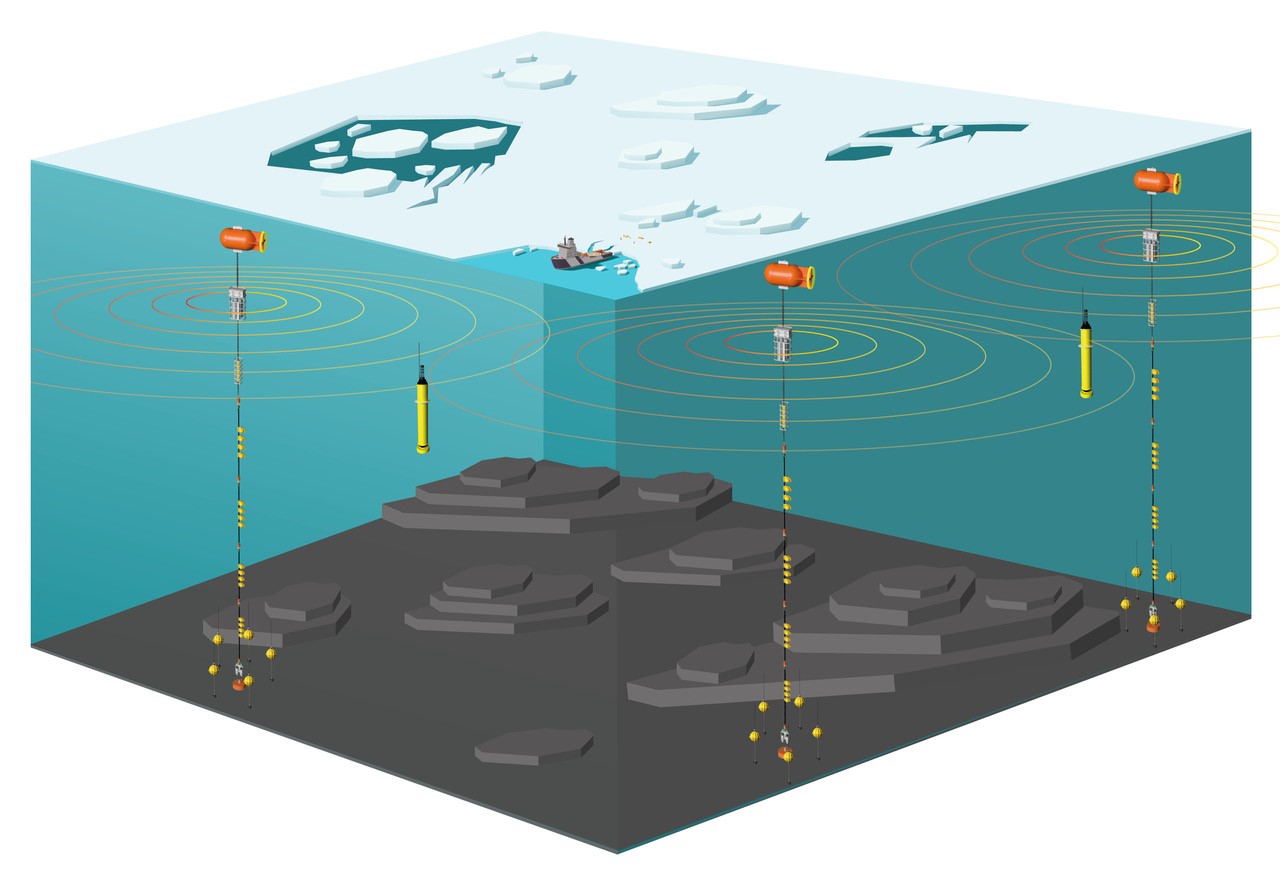The Arctic Ocean is one of the least explored oceans on the planet. There is lack of in situ observations in large parts of this region, especially on the seafloor and in the ocean under the sea ice. This means that the research communities working with climate, weather, ice-ocean processes, and geophysical hazards have limited knowledge about the processes below the sea ice. The lack of data limits the possibility to advance research in this region. It is therefore necessary to establish observing systems for data collection in the Arctic Ocean.
Our vision is to establish a network of multipurpose moorings anchored at the seafloor in the Arctic. A conceptual view of the mooring network is shown in the figure below. The moorings are anchored to the sea floor and kept vertical with floatation elements e.g., the orange buoy at the top, and yellow floatation elements along the mooring wire. Low frequency sources provide acoustic signals for geo-positioning of underwater floats. Acoustic signals from one source are received on 1000 m long hydrophone arrays on the other moorings for acoustic thermometry and passive acoustics. Moorings will also include instruments for collection of ice-ocean parameters (e.g., upward looking sonars, acoustic doppler profilers, biochemical measurements, and standard instruments for temperature, pressure, and salinity measurements.
The network will facilitate geo-positioning of ARGO floats and gliders, provide ice-ocean observations, acoustic thermometry, and passive acoustics. Acoustic thermometry provides synoptic measurements of heat content of ocean under the sea ice. Passive acoustic data will be used for different studies such as detection of earthquakes, observation of marine mammals, and monitoring ship traffic noise.

The specific objectives of the project are to:
- Establish collaboration with existing and emerging research infrastructures in the Arctic;
- Improve the observing capabilities in ice-covered Arctic Ocean through new infrastructure;
- Unlock new observing capacity to RIs and researchers through methods, tools and training;
- Advance observing systems in the Arctic building on subsea technology;
- Reduce environmental impact of Arctic observing systems;
- Comply with the FAIR principles and contribute to Open Science.